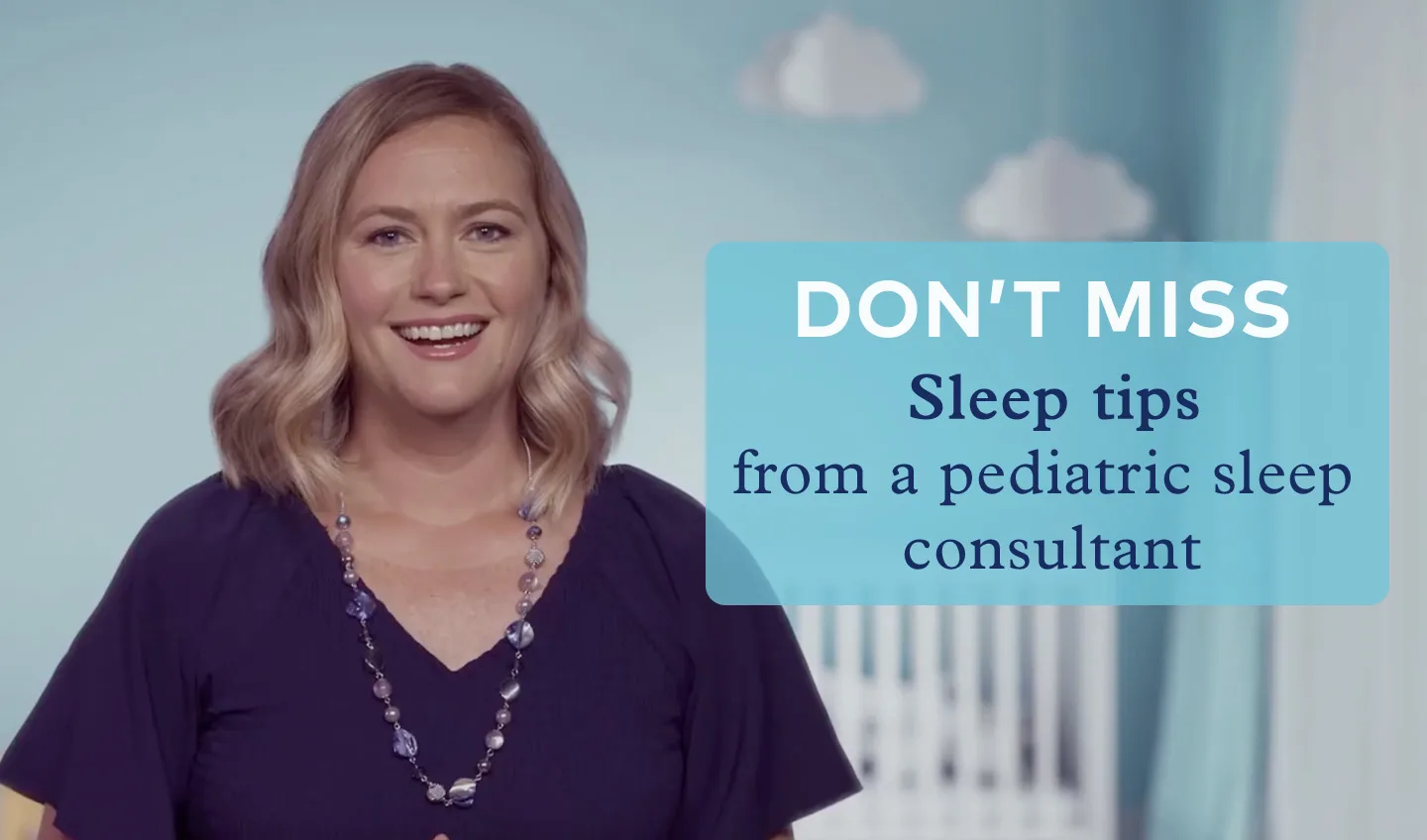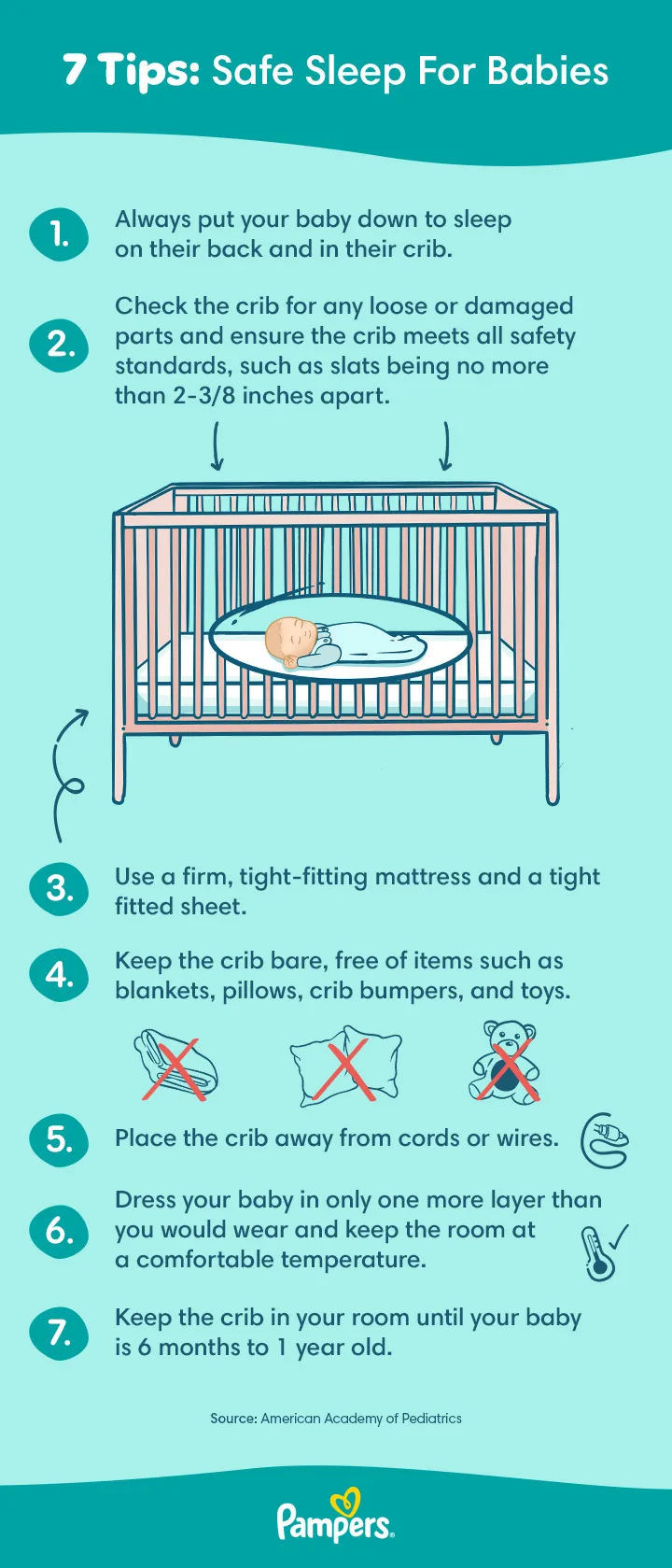Understanding SIDS: Risk Reduction and Safe Sleep Practices for Newborns
As a parent of a young child, you may have come across the term SIDS, which stands for sudden infant death syndrome. Although the exact causes of SIDS remain unknown, there are ways to create a safe sleep environment for your baby that may help reduce the risk.
Read on to learn more about what is SIDS, possible SIDS risk factors, and how you can support your baby’s safety by taking simple preventive steps.
What Is SIDS?
The definition of sudden infant death syndrome (SIDS) refers to the unexplained and unexpected death of an otherwise healthy baby under 12 months old. SIDS is sometimes called crib death because it most often occurs while the baby is sleeping.
How Common Is SIDS?
Based on data from Statistics Canada, between 2015 and 2020, approximately 1,700 infants under the age of one died each year. On average, 1 in 15 of these deaths occurred while the infant was sleeping, with the majority being sudden and unexpected.
This translates to about 110 sleep-related infant deaths annually, affecting less than 0.01 percent of all live births in Canada.
Baby Development Milestones Watching how your baby grows and develops is an important part of parenthood. Keep track of your little one's progress with our baby development milestones articles!
What Causes SIDS?
It’s not known exactly what causes SIDS, but there may be some environmental factors that make a baby more vulnerable to SIDS, as well as maternal, physical, and general factors that may increase the risk. These risk factors are described in our section below.
SIDS Risk Factors
As mentioned above, here are some of the potential risk factors of SIDS, including environmental, maternal, physical, and general factors:
Sleep Environmental Factors
Some sleep factors that increase SIDS risk include:
Stomach or side sleeping position. Babies placed to sleep on their stomachs or sides may have more difficulty breathing than those placed on their backs.
Sleeping on a soft surface. Sleeping on a cushy comforter, a soft mattress, or a waterbed can block a baby’s airways.
Sharing a bed. Sleeping in the same bed as the parents, siblings, or pets increases the risk of SIDS, because of the potential for blocking the baby’s airways.
Overheating. Being too warm while sleeping can increase the risk of SIDS.
Maternal Risk Factors
Even before birth, parents-to-be can also unwittingly contribute to their baby’s SIDS risk. Maternal risk factors include if a pregnant person:
is younger than 20
smokes cigarettes
consumes drugs or alcohol
has had inadequate prenatal care. That’s why it’s important to schedule and go to all your prenatal visits.
Physical Factors
These are some of the physical risk factors that may increase a baby’s risk of SIDS:
Brain defects. In some babies, the portion of the brain that controls breathing and arousal from sleep hasn’t matured enough to work properly, making them more vulnerable to SIDS.
Low birth weight. Premature babies or those who are twins or other multiples, may not have developed full control over their breathing and heart rate yet, potentially making them more vulnerable.
Respiratory infection. Having recently had a cold may contribute to breathing problems for babies, which can increase the risk.
General Risk Factors
Although the exact cause or causes of sudden infant death syndrome are unknown, factors such as age may contribute to the overall risk of SIDS:
Sex. Boys are slightly more likely to be affected by SIDS.
Age. What age are babies most at risk for SIDS? Infants are most vulnerable between the second and fourth months of life. So, when does the risk of SIDS decrease? The SIDS risk significantly decreases after your baby turns 6 months old and is rolling over, which is a sign they are developing head and neck control.
Race. Non-white babies are more at risk.
Family history. There’s a higher risk among babies who’ve had siblings or cousins die of SIDS.
Tobacco smoke. Babies who live with smokers are at an increased risk.
Premature birth and low birth weight. Being born early and/or having a low birth weight can increase the risk.
How to Help Prevent SIDS
Knowing how to promote safe sleep and help prevent SIDS is essential. Follow these SIDS prevention tips to help lower the risk:
Do
Put your baby to sleep on their back. Do this every single time for the first year of their life and tell anyone else who may care for them that this is a must, whether it’s for a nap or to sleep at night. A good way to remember is with the expression “Back to sleep.” Some babies turn onto their stomach or side on their own after being placed on their backs; it’s OK to leave them in that position, experts say, as long as they are able to roll over in both directions without help.
Keep the crib bare. Make sure the mattress in the crib is firm and fits the crib perfectly without leaving any gaps at the sides. Avoid using any padding, blankets, comforters, pillows, bumper pads, or quilts. Only a tight-fitted sheet should be used—no loose bedding. Never place toys in the crib—not even soft teddy bears. These fluffy surfaces and objects can interfere with your baby’s breathing.
Move your baby to a firm surface. Sometimes your baby may fall asleep in the car seat, stroller, or sling. Move them to a firm sleep surface as soon as possible. Never put your baby to sleep on a waterbed or a cushion.
Let your baby sleep in your room. While this depends on your personal preferences, experts recommend your baby sleep in your room with you, but alone in a crib. If possible, try this up until they’re 12 months old and consider keeping the crib or bassinet at about an arm’s length away from your bed.
Breastfeed your baby. If you can, breastfeed for at least the first six months. Research suggests this can significantly reduce the risk of SIDS.
Have skin-to-skin contact. Skin-to-skin contact has many benefits. You can practice it while breastfeeding or bottle feeding, or any other time throughout the day. Your partner can do it, too.
Offer a pacifier. Sucking on a pacifier at naptime and bedtime might reduce the risk of SIDS. But don’t use pacifiers with a strap or string, or ones that attach to clothing. If you’re breastfeeding, wait until your baby is 3 to 4 weeks old and you’ve settled into a nursing routine before offering a pacifier. If the pacifier falls out of your baby’s mouth while they’re sleeping, don’t put it back in.
Make sure your baby gets all necessary vaccines. Some research indicates immunizations can help prevent SIDS.
Make sure baby beds and gear are safe. The crib, bassinet, stroller, and play yard should all meet current safety standards. Do not use the item if it’s broken, and if you’re borrowing or using a hand-me-down, make sure it meets current regulations.
Provide tummy time. Give your baby plenty of tummy time when they’re awake, as it helps strengthen their neck and back muscles. Remember to supervise tummy time, making sure that your baby remains awake.
Don’t
Don’t let your baby become overheated. Avoid letting your baby get too hot, as this increases the SIDS risk. Make sure their head isn’t covered when you put them to bed. Ensure the air temperature is comfortable for you—make sure it’s not too hot. Dress your baby in no more than one extra layer than you would wear, and don’t use blankets. Instead, try a wearable blanket or a sleep sack with no hood, or footie pajamas. If your baby’s head is hot and sweaty, or if their chest feels hot, they’re too warm.
Don’t sleep with your baby. Sleeping in the same bed as your baby isn’t recommended, and here’s why: It increases the SIDS risk because you can accidentally roll onto your child as you sleep, and the baby is at risk of becoming entangled in the bedding.
Don’t rely on a SIDS baby monitor. Experts discourage the use of monitors and other devices that claim to reduce SIDS because they are ineffective.
Don’t smoke around your baby. Don’t smoke near your baby, and keep your car and home smoke-free, too. Keep your baby away from places where people smoke.
This is a lot to take in, but this slogan might help. Just remember the ABCs of Safe Sleep: Your baby should always sleep
ALONE;
on their BACK;
in a CRIB.
FAQS AT A GLANCE
These steps are good prevention measures to help lower the risk of sudden infant death syndrome:
- Put your baby to sleep on their back
- Keep the crib bare
- Make sure the sleep surface is firm
- Don’t let your baby become overheated
- Let your baby sleep in your room in their own crib
- If you can, breastfeed your baby
- Practice skin-to-skin contact
- Don’t rely on baby monitors that claim to reduce the risk of SIDS
- Use a pacifier
- Make sure your baby gets all necessary immunizations
- Don’t smoke around your baby
- Practice tummy time but only when your little one is awake.
The Bottom Line
SIDS can understandably be a concern for parents, but it’s important to remember that SIDS is rare. By consistently following safe sleep practices throughout your baby’s first year, you can help reduce the risk. Always put your little one to sleep on their back in a crib and keep the crib free of blankets, pillows, bumpers, and toys.
And don’t forget, with each Pampers purchase, you can earn rewards through the Pampers Rewards App. Download the app to access digital offers and discounts while caring for your baby.
How We Wrote This Article The information in this article is based on expert advice found in trusted medical and government sources, such as the American Academy of Pediatrics and the American College of Obstetricians and Gynecologists. You can find a full list of sources used for this article below. The content on this page should not replace professional medical advice. Always consult medical professionals for full diagnosis and treatment.
Join Pampers Club and get:






